Drugs that eliminate or weaken the feeling of pain are called analgesics. They are divided into 2 main groups: narcotic and non-narcotic. Each group has its own mechanism of action on the human body. Drugs differ in intensity, composition and purpose. But one thing unites them: pain medications do not affect the cause of the pain, but eliminate the symptom itself. In this article you will learn the features of drugs in each group, their differences, advantages and disadvantages.

Content:
Which pain reliever firm to choose
We have compiled a rating of pharmaceutical companies that use high-quality, purified raw materials and the latest technologies in the manufacture of pain-relieving medicines:
1. Grodzisk Pharmaceutical
2. Ranbaxy
3. Reckitt benckiser
4. FSUE "MEZ"
5. Berlin hemi
6. Synthesis OAO
7. Organika OJSC
8. Micro
The best painkillers group opioid narcotic analgesics
Nurofen
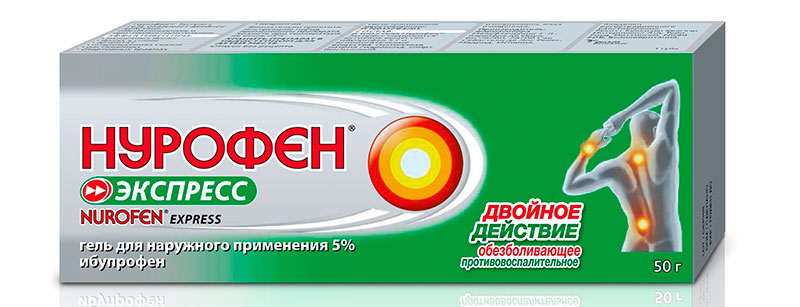
The drug is used with medium and light pain syndrome. The active ingredient, ibuprofen, inhibits the synthesis of prostagladins. The drug contains small quantities of codeine - a narcotic substance that acts on the receptors of the central nervous system and has an analgesic effect. In addition, the medicine relieves fever, inflammation, cough syndrome. Indications: pain of various origins (dental, rheumatic, headache, etc.), migraine, myalgia, fever with ARVI, flu, etc. Available in tablets, candles, suspensions and in the form of a gel.
Advantages:
- released a line of drugs for children;
- convenient release form;
- has a combined effect on the body: relieves pain, fever and inflammation;
- quickly absorbed - reduces pain sensitivity after 15 minutes.
Disadvantages:
- There are contraindications: cardiac, respiratory, renal failure, hemophilia, leukopenia, hypersensitivity, etc .;
- possible side effects: insomnia, allergies, anemia, nausea, heartburn, etc.
Promedol

The drug is an effective pain reliever, it is prescribed for pains of strong intensity. The active ingredient is trimeperidine. The drug reduces the excitability of nerve cells and the conduction of impulses, due to which an analgesic effect appears. Available in pills and injections.
Advantages:
- increases the threshold of pain sensitivity;
- quick action - analgesic effect occurs after 15 minutes;
- due to its high efficacy, the drug is especially often used in surgery (for fractures, for the prevention of pain shock, for anesthesia), obstetrics (as a painkiller, as a stimulant of a sluggish generic process), oncology
- safe for newborns;
- has a moderate antispasmodic effect.
Disadvantages:
- inhibits conditioned reflexes, slows down the reaction rate;
- addictive;
- recipe required;
- duration of action is only 2-4 hours;
- the drug has a moderate hypnotic effect, so it is not recommended to take people whose work is associated with increased attention.
Tramadol
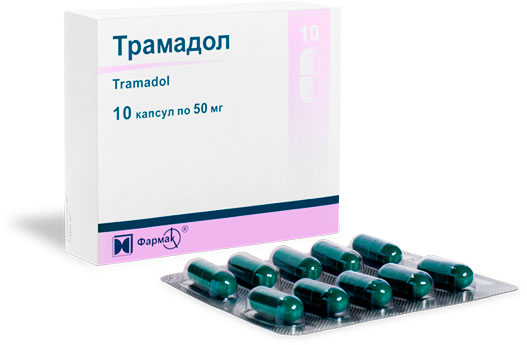
The drug is used for severe and moderate pain, incl. inflammatory, vascular, traumatic nature, as well as oncology. The drug is inferior in its degree of action to codeine and morphine, but it is still notable for high efficiency, fast and long-lasting effect. The active ingredient, tramadol, inhibits the conduction of nerve impulses. Dosage form: capsules, solution, drops, suppositories, tablets.
Advantages:
- strong analgesic activity;
- convenient forms of release;
- long and fast effect;
- It is well tolerated and does not inhibit respiration, blood circulation, and gastrointestinal function like many opioid drugs;
- has antitussive effect.
Disadvantages:
- addictive, addictive;
- rarely causes the following adverse reactions: nausea, dizziness, vomiting;
- inferior in activity to morphine, codeine;
- the drug has a sedative effect, so it is not recommended to take those whose work is associated with increased attention.
The best non-narcotic painkillers
Ketanov
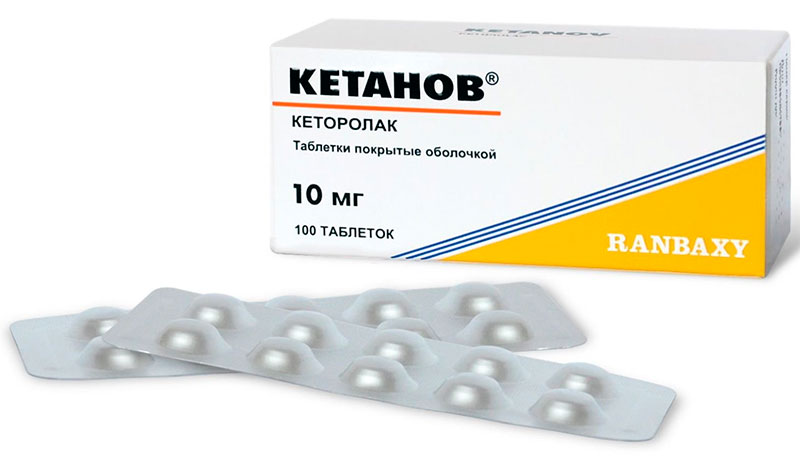
The drug is a powerful nonsteroidal analgesic, which is used for severe and moderate pain. The active component, ketorolac, inhibits the synthesis of prostagladins, which modulate pain sensitivity, inflammation and thermoregulation. Indications: pain in oncology, tooth extraction, fractures, bruises, soft tissue injuries, menstruation; the postoperative period, after childbirth, etc. Available in the form of a solution and tablets.
Advantages:
- belongs to potent painkillers and has a wide area of destination;
- no dependency;
- it is comparable in strength to morphine, but unlike it does not have a sedative, anxiolytic action, and also does not inhibit the respiratory system;
- is an excellent analogue of opioid analgesics;
- quick action in a quarter of an hour.
Disadvantages:
- side effects: nausea, anxiety, loss of strength, nervousness, heart palpitations;
- not suitable for chronic pain;
- contraindications: age up to 16 years, hypersensitivity, lactation, pregnancy, gastric ulcer, bronchial asthma, etc.
Dexalgin

The drug belongs to nonsteroidal analgesics. It is used to relieve pain of medium and mild intensity. Also, the drug relieves the inflammatory process and has a moderate antipyretic effect. The active ingredient, dexketoprofen, reduces the synthesis of prostagladins and suppresses pain receptors. Dosage form: injections and tablets.
Advantages:
- It has a combined effect on the body: reduces inflammation, fever and pain;
- after half an hour, begins to act;
- improves the condition of the patient;
- drug effect can last up to 6 hours;
- well tolerated.
Disadvantages:
- not suitable for long-term therapy;
- There are contraindications: bronchial asthma, hypersensitivity, diseases of the liver, heart, kidney, pregnancy, lactation.
Butorphanol
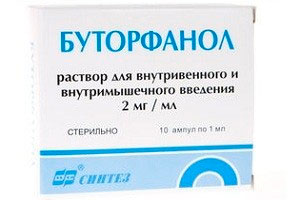
This is an opioid non-narcotic analgesic. It is considered one of the most powerful drugs among opioids. The duration and strength of action is similar to morphine, but unlike it is effective in smaller doses. The active ingredient is butorphanol. Indications: severe pain (postpartum, oncology, injury). Dosage form: ampoules.
Advantages:
- quickly and effectively relieves pain of various etiologies;
- rarely addictive compared with other opioids;
- valid up to 4 hours;
- has a sedative, antitussive effect.
Disadvantages:
- contraindications: pregnancy, lactation;
- prolonged regular use is addictive;
- need a doctor's prescription;
- adverse reactions after taking: drowsiness, loss of strength, dizziness, nausea, respiratory depression, vomiting.
Diclofenac
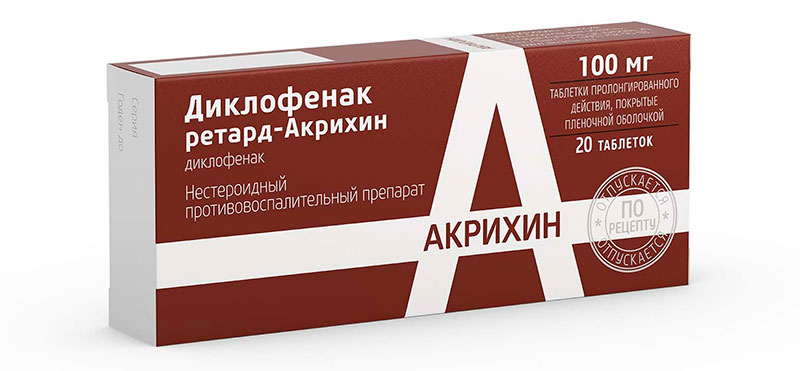
The drug belongs to the anti-nonsteroidal anti-inflammatory drugs and is used to relieve the pain of mild and moderate severity. The active ingredient, diclofenac sodium, inhibits the synthesis of prostagladins. Indications: bruises, sprains, inflammation after injuries, headache, toothache, febrile syndrome, etc. Dosage form: injection, tablets, gel.
Advantages:
- the drug has an antirheumatic effect;
- relieves inflammation, fever and pain;
- valid up to 6 hours in half an hour after application;
- low cost;
- increases joint mobility;
- in the post-traumatic or postoperative period reduces swelling, swelling.
Disadvantages:
- adverse reactions: violation of the gastrointestinal tract, dizziness, allergies, irritability, sleep disturbances, etc .;
- there are contraindications: arthrosis, neuritis, gout attacks, Bechterew's disease, stomach disease, lactation, hypersensitivity, etc.
Took
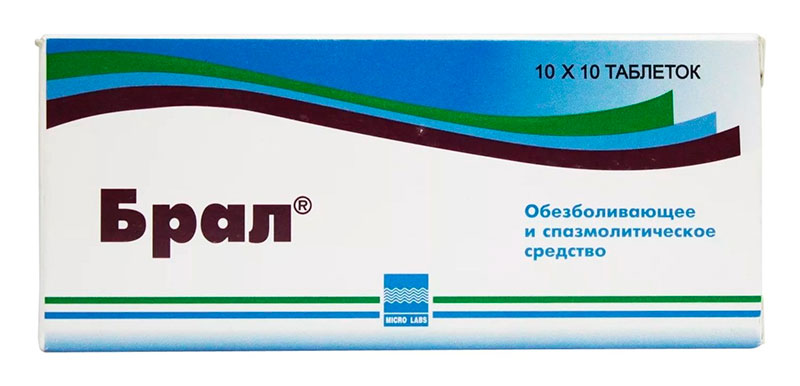
The drug is used for short-term treatment of moderate pain symptoms of various etiologies, as well as for spasms of smooth muscles, after surgical interventions and in diseases of the peripheral nervous system. The drug has 3 active ingredients: pitofenol (myotropic action), metamizole sodium (reduces pain and temperature), fenpiverinium bromide (relaxes smooth muscle). Dosage form: injections and tablets.
Advantages:
- the drug not only soothes the pain, but also has an antispasmodic effect, as well as relieves fever and inflammation;
- suitable for children older than 3 months;
- side effects are extremely rare;
- low cost;
- suitable for the treatment of fever resulting from inflammatory or catarrhal diseases.
Disadvantages:
- contraindications: pregnancy, lactation, liver disease, bronchial asthma, low blood pressure, etc .;
- if you are allergic to any component of a non-steroidal drug, you should refuse from taking it;
- not recommended for prolonged use.
What anesthetic buy
1. If you need a medicine that quickly cope with pain of moderate and mild degree, then you need to choose Nurofen. This medicine has a line of drugs for children.
2. The drug, which is used for severe pain - Promedol. Due to its high effectiveness and relatively safe effects on the body, the medicine is used in surgery and obstetrics.
3. If you need a strong painkiller, which can be purchased without a prescription, it is better to choose Ketanov. The drug is one of the most powerful among non-narcotic, nonsteroidal analgesics, besides the drug has a pronounced anti-inflammatory effect.
4. A drug that will eliminate the pain of an acute and chronic nature after operations, injuries, and oncology - Tramadol. It is not recommended for pain in light intensity.
5. If you need a drug for the relief of pain of light or moderate intensity, it is better to purchase Dexalgin.
6. If you need a strong analgesic opioid non-narcotic analgesics, it is better to choose butorphanol.
7. A drug that is suitable for reducing pain associated with surgery, trauma, childbirth, or diseases of the back, joints - Diclofenac.
8. A medicine that will relieve the pain of weak and medium intensity - Took. The drug is suitable for admission in the postoperative period, with colitis, with antispasmodic pain, neuralgia, etc. In addition, it is allowed to take children from 3 months.
It will be interesting to friends too







